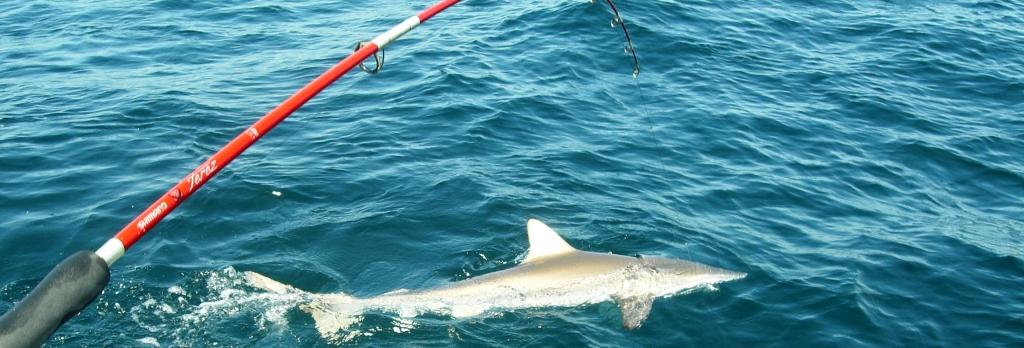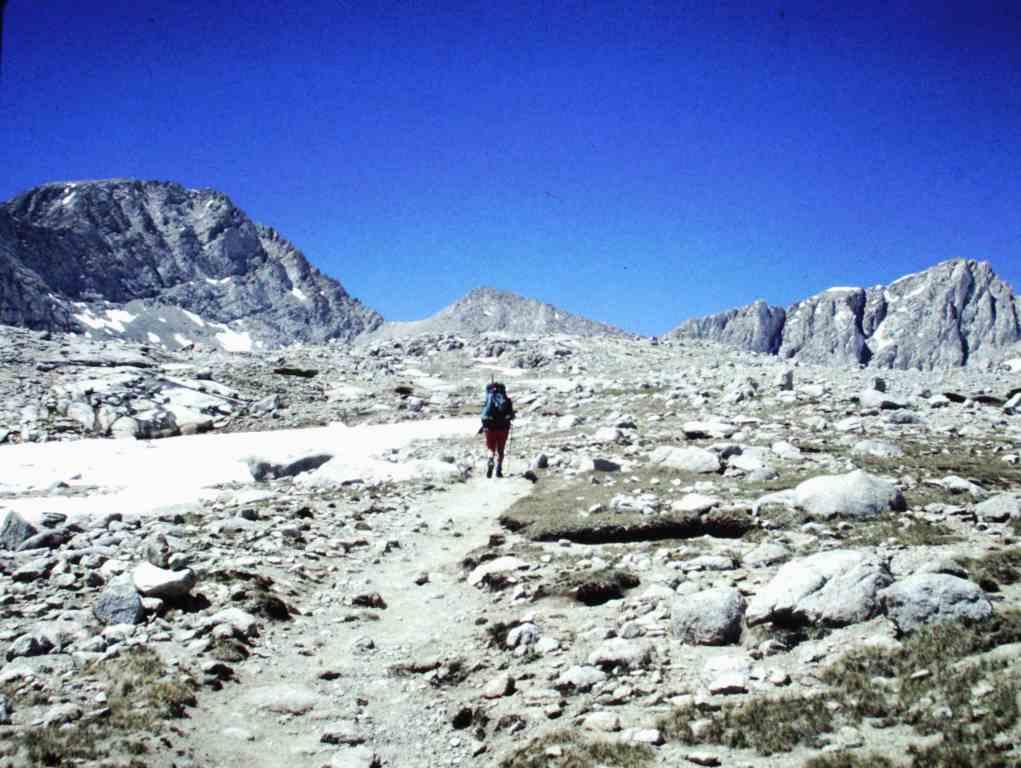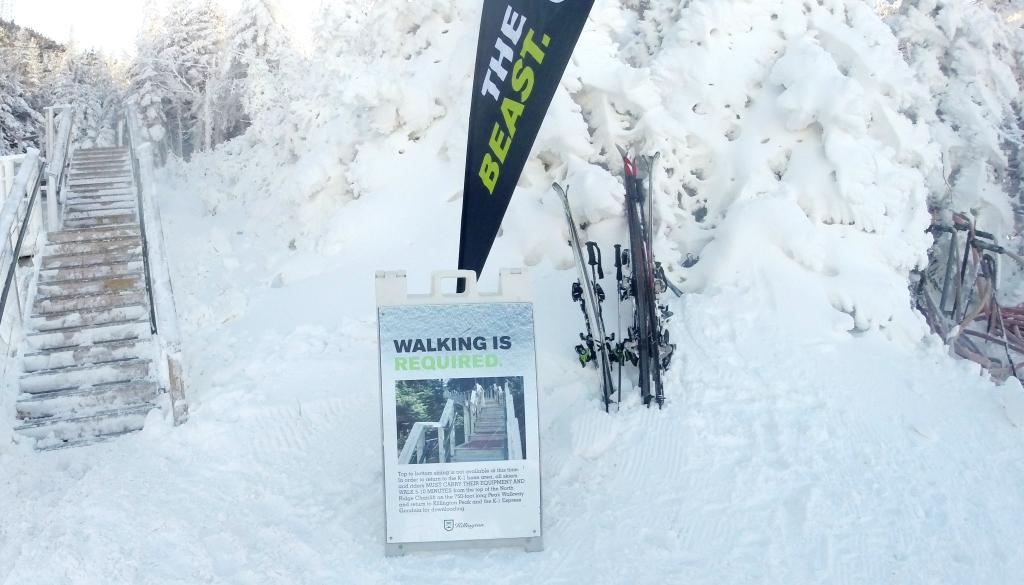
Something is trying to pull me into the Gulf of Mexico. And even though many years ago I got an A+ on an essay about The Old Man and the Sea, it is only now that I have even the beginnings of a glimpse of an idea of what that book was about. My world has shrunk: there is me on one end of the fishing line, and the demon fish from hell on the other.
I am a first-time deep-sea fisherman, on a charter trip on the Necessity, captained by Ben Fairey, who docks at the Orange Beach Marina. I have fished before, but only for trout, which was different: The trout, you just pulled out of the water, and if they were big enough to keep, they fit in a camping pan on a tiny little cook-fire. This one, from the way it’s fighting, would need a pan the size of a bathtub set over a bonfire. Whatever it is, it wants to turn the tables.
In Your Bucket Because…
- The crew makes it practically impossible for you to come home empty handed.
- You can take your catch to any number of restaurants that will cook it up for you.
- Good for: Fishermen, especially beginners (you get a lot of help and coaching — too much, for some of the more experienced fishermen on our boat). It’s a great day’s outing for a family or group of friends.
Learning the Sport of Fishing
“It’s all about the sport,” one of the more experienced fishermen on the boat told me: She had been disappointed when she landed a nice-sized red snapper with nary a fight.
I’m not quite understanding this “sport” thing. I’d have been happy to trade her luckluster fish for my Hemingway nemesis.
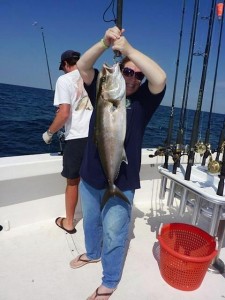
“Reel!” She coaches me. I’m the only one on the boat who has never been deep-sea fishing, and I’m told that that means I am going to catch the first fish we get to keep.
I am trying to uphold my end of the superstition, really I am, but the fish is pulling so hard I can’t turn the reel, even if I knew which way to turn it, which I don’t. And obviously, the down-and-up give-and-take reel-dipping motion is completely beyond me. But somehow, I manage to turn the reel a few times, then dip when instructed, then I reel a few times more. My wrists are clenched into an aching knot: It feels like I have a whale on the other end. But no, it’s just an amberjack: 25 pounds, it turns out, as I haul it into the boat (with the help of the crew) and we measure it. I get my picture taken in a pose that is half triumph and half bewilderment.
Fishing in the Waters of the BP Oil Spill
I’m fishing off of Orange Beach and Gulf Shores, the 30 miles of white sand beach that give Alabama a slice of coast between Mississippi and Florida. And since you’re going to ask, I’ll answer: Yes, this is the very part of the Gulf of Mexico where BP’s Deepwater Horizon well poured hundreds of millions of gallons of oil into the Gulf for three endless black months in 2010.
Well, you saw the pictures: the globby beaches, the pathetic, suffocating sea-birds, the dead fish, the black ooze. That’s gone now: You simply won’t see it, except when a change of wind and tides kicks up a glob that’s been lying at the bottom and sends it to shore. Commercials (paid for by BP) show restored sugar-sand beaches, and they aren’t lying: I saw those same beaches.
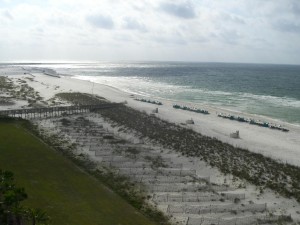
But it’s what you can’t see — and it’s what the experts can’t or won’t tell you — that has kept folks from breaking out the champagne. No one I talked to, from park rangers to city officials to fishing boat captains, thinks we know all we need to, let alone what will happen in the future. In the meantime, they’re looking on the positive side: The fishing catch here is rigorously tested, and according to the FDA, it is safe to eat. Locals eat it, and they let their kids swim in the waters, too. But sometimes they wonder, and sometimes they worry.
Not all studies are so optimistic, and many raise questions with no clear answers. What was the impact of the oil on the deep sea coral reefs? Did it infect the food chain? When environmental anomalies are noted, such as recent deaths in the dolphin population, is that coincidence, part of the natural cycle, or related to the spill? A 2012 Auburn University study (published in the peer-reviewed scientific journal PLoS ONE) identified measurable impacts on microscopic life, which could have a ripple effect up the food chain. How big a ripple, and how high up the chain will it go? There are more questions than answers.
One of the reasons the fisheries are being so thoroughly studied is to establish some kind of baseline so that if another spill occurs, the scientists will be ahead of the game with reliable benchmarks. It’s something they didn’t have this time around, which is part of the problem. It’s hard to restore something to its original state when you don’t know exactly what that state was.
The Shark that Got Away
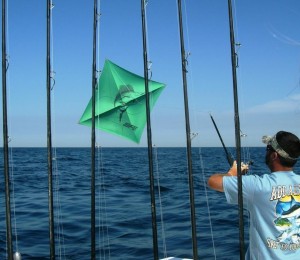
Back on the boat, we’re taking turns. The crew has launched a kite into the air: Kite fishing, an idea imported from Florida, is a way to attract the fish to the surface without them knowing that the bait is actually bait.
I watch as two guests on the boat struggle for close to half an hour, taking turns and at times working in tandem, to bring in what turns out to be a black-tipped reef shark. A short while later it’s my turn again, and after a crew member sets the hook, I’m handed a rod. This one, I’m told, is “just” — don’t you love that “just”? — another shark. If my first fish was an ocean-going hell-beast, this one was Moby Dick. I am no Captain Ahab: I will ‘fess up and admit I have never been so relieved in my entire life as when that shark broke the line.
Our haul looks like enough for a biblical miracle. I’m not in the habit of buying a 25-pound fish in the grocery store, and I’m thinking if we have to eat all this, we’re going to grow gills. Back at the marina, we get our pictures taken and the crew fillets the fish for us: all amberjacks, as it isn’t red snapper season and we had to throw those back.
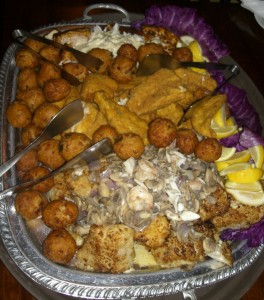
Amberjacks make “good eating” the crew assures us, and they looked thrilled when we shared a hefty part of our catch with them. (What else were we going to do with 125 pounds of fish?) We take the rest to Shipp’s Harbour Grill in Orange Beach, a popular seafood restaurant that does “hook and cook” — meaning you hook it, they cook it. Given the volume of fish and the number of people in our group, we find ourselves tasting pretty much all the ways you can think of to cook an amberjack, from deep fried (well, this *is* the heart attack belt) to blackened to cooked with crab and gorgonzola, to sautéed with crab, shrimp, mushrooms and white wine butter sauce.
And I found myself musing on the mystery of why it is that a fish tastes so much better when you caught it yourself.
Practicalities
- You don’t need to bring anything on a charter boat: All equipment is provided.
- Except sunglasses: Sunglasses are a must. (You can buy them at the Orange Beach Marina store, which I learned after my checked luggage arrived with an “inspected by TSA tag” but without a pair I’d packed.)
- Seasick pills or a patch are recommended if you’re prone to motion sickness: The Gulf can be bumpy.
- The Alabama Coast is a 30-mile island edged by white sand beach called Gulf Shores and Orange Beach.
